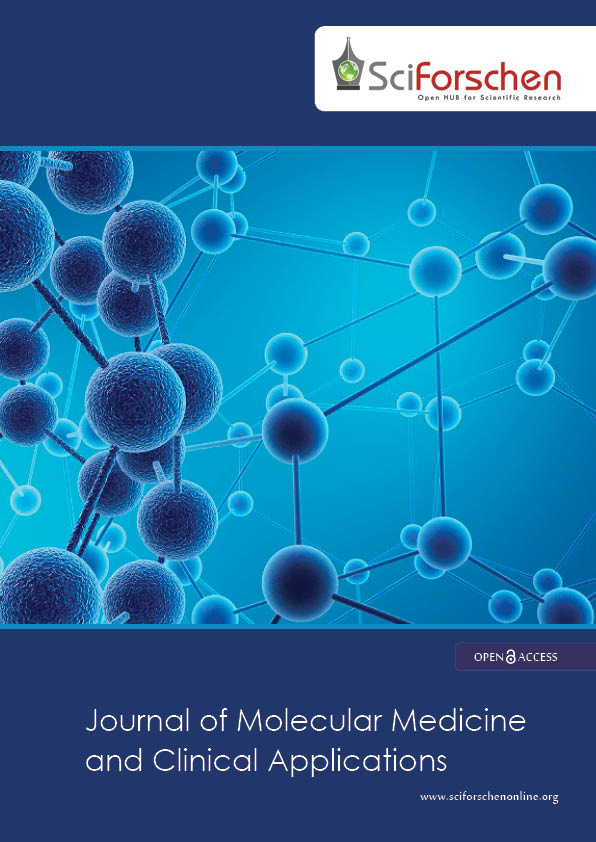
Scientist
- : 7342395163
Department of MCDB
University of Michigan
USA
Education
| Ph.D. in Neurobiology | 2000-2003 |
| M.S. in Neurobiology | 1996-1999 |
| Bachelor of Medicine | 1990-1995 |
Biography
Xiping Cheng completed her PhD in 2003 at the 4th Military Medical University, China.After several years of research on chronic pain and spinal cord regeneration at the 4th Military Medical University, she continued her postdoctoral studies at the University of Michigan where she focused on investigating calcium channels, their dysfunction in humandiseases, and the treatment of these diseases by manipulating channel functions.One of her studies focused on the role of a temperature-sensitive Ca2+-permeable channel-TRPV3 showed that TRPV3 can form a complex with the epidermal growth factor receptor (EGFR) to regulate proper formation of skin and hair (Cell. 2010, highlighted by Cell and Science Signaling). Later on, she discovered that TRPML1 KO mice exhibit primary, early onset muscular dystrophy. Her study showed that TRPML1, a lysosome Ca2+ channel, is crucial for muscle sarcolemma resealing (Nature Medicine, 2014). Currently at Regeneron, she is studying the role of endolysosomal system in muscle and metabolism diseases.
Research Interest
Intracellular calcium signaling and endolysosomal system using multidisciplinary approaches including mouse genetics, biochemistry, cellular and molecular biology, and live imaging. Her research focused on a better understanding of lysosome dysfunction in human diseases and the treatment of these diseases by regulating lysosome function
Professional Activities:
| Nature Science Foundation of China (equal to NIH in USA) (Grant 30100195) “Repair of Injured Spinal Cord by Transplantation of Nogo-antibody Transgenic Ensheathing Cells”. | 2002-2004 |
Publications
- Zhang X*, Cheng X*, Yu L*, Yang J, Calvo R, Patnaik S, Hu X, Gao Q, Yang M, Lawas M, Delling M, Marugan J, Ferrer M, Xu H. 1) MCOLN1 is a ROS Sensor in Lysosomes that Regulates Autophagy. In submission. * These authors contributed equally to this work.
- Li X, Rydzewski N, Hider A, Zhang X, Yang J, Wang W, Gao Q, Cheng X, Xu H.A molecular mechanism to regulate lysosome motility for lysosome positioning and tubulation.Nat Cell Biol. 2016 Mar 7. doi: 10.1038/ncb3324.
- Cheng X*, Zhang X, Yu L, Xu H*. Calcium signaling in membrane repair. Semin Cell Dev Biol. 2015; 45:24-31. * correspondence author.
- Xu G, Wang R, Wang Z, Lei Q, Yu Z, Liu C, Li P, Yang Z, Cheng X, Li G, Wu M.NGL-2 Is a New Partner of PAR Complex in Axon Differentiation.J Neurosci. 2015; 35(18):7153-64.
- Cheng X*, Zhang X, Gao Q, Ali Samie M, Azar M, Tsang WL, Dong L, Sahoo N, Li X, Zhuo Y, Garrity AG, Wang X, Ferrer M, Dowling J, Xu L, Han R, Xu H*.The intracellular Ca2+ channel MCOLN1 is required for sarcolemma repair to prevent muscular dystrophy. Nature Medicine.2014,doi: 10.1038/nm.3611. [Epub ahead of print]. * correspondence author.
- Samie M, Wang X, Zhang X, Goschka A, Li X, Cheng X, Gregg E, Azar M, Zhuo Y, Garrity A, Gao Q, Slaugenhaupt S, Pickel J, Zolov J, Weisman L, Lenk G, Titus S, Bryant-Genevier M, Southall N, Juan M, Ferrer M, Xu H. A TRP channel in the lysosome regulateslarge particle phagocytosis via focal exocytosis. Developmental Cell. 2013;26(5):511-24.
- Wang X, Zhang X, Dong X, Samie M, Li X, Cheng X, Goschka A, Shen D, Zhou Y, Harlow J, Zhu M X, Clapham DE, Ren D, and Xu H. Sodium-selective ion channels in the endosomes and lysosomes. Cell. 2012; 151(2):372-83.
- Jin J, Wu L, Jun J, Cheng X, Xu H, Andrews N, Clapham D. Trpm7 is required for early embryonic development. PNAS. 2012; 109(5):E225-33.
- Dong XP, Shen D, Wang X, Dawson T, Li X, Zhang Q, Cheng X, Zhang Y, Weisman L, Delling M, and Xu H. Activation of mucolipin Ca2+ release channels in the endolysosome. Nature Communications. 2010;1(4) pii: 38.
- Cheng X, Jin J, Hu L, Shen D, Dong X, Samie M.A, Knoff J, Eisinger B, Liu M, Huang S, Caterina M, Dempsey P, Micheal E, Dlugosz A, Andrew N, Clapham D, Xu H. A keratinocyte TRP channel controls hair morphogenesis and skin barrier formation via EGFR signaling and transglutaminaseactivity. Cell. 2010;141(2):331-343. Leading Edge Preview,Cell. 2010;141(2):218-220. Featured Publication, Science Signaling 2010;Vol. 3, Issue 118, p. ec12.
- Cheng X, Shen D, Samie M.A., and Xu H. Mucolipins: intracellular TRPML1-3 channels (Invited review). FEBS Letters. 2010;584(10):2013-2021.
- Dong X, Wang X, Shen D, Chen S, Liu M, Wang Y, Mills E, Cheng X, Delling M, and Xu H. Activating mutations of the TRPML1 channel revealed by proline scanning mutagenesis.J. Biol. Chem. 200913;284(46):32040-32052.
- Yang H, Cheng X, Li J, Yao Q, Ju G. De-differentiation response of cultured astrocytes to injury induced by scratch or conditioned culture medium of scratch-insulted astrocytes. Cell MolNeurobiol. 2009 29(4):455-73.
- Dong X, Cheng X, Mills E, Delling M, Wang F, Kurz, T and Xu H. The Type IV Mucolipidosis-Associated Protein TRPML1 is an endo-lysosomal iron release channel. Nature, 2008, 455(7215):992-996.
- Yang H, Cheng X, Yao Q, Li J, Ju G. The promotive effects of thymosin beta4 on neuronal survival and neurite outgrowth by upregulating L1 expression. Neurochem Res. 2008 33(11):2269-80.
- Yang H, Liang Z, Li J, Cheng X, Luo N, Ju G. Optimized and efficient preparation of astrocyte cultures from rat spinal cord. Cytotechnology. 2006 52(2):87-97.
- Cheng X, Wang B, Liu H, You S, Jiao X, Huang W, Ju G. Phosphorylation of extracellular signal-regulated kinases 1/2 is increased in the microglia of the rat spinal cord following dorsal root transaction. Neuroscience,2003, 119: 701-712.
- Xiao H, Huang Q, Zhang F, Bao L, Lu Y, Guo C, Yang L, Huang W, Fu G, Xu S, Cheng X, et al. Identification of gene expression profile of dorsal root ganglion in the rat peripheral axotomy model of neuropathic pain. PNAS. 2002, 99: 8360-8365.
- Zhang X, Xu ZO, Shi TJ, Landry M, Holmberg K, Ju G, Tong YG, Bao L, Cheng X, Wiesenfeld-Hallin Z, Lozano A, Dostrovsky J, Hökfelt T. Regulation of expression of galanin and galanin receptors in dorsal root ganglia and spinal cord after axotomy and inflammation. Ann N Y Acad Sci. 1998;863:402-13.
- Cheng XBroberger C, Tong Y, Xue Y, Ju G, Zhang X, Hokfelt T. Regulation of expression of neuropeptide Y Y1and Y2 receptors in the arcuate nucleus of fasted rats. Brain Research. 1998, 792: 89-96.

